- Submissions

Full Text
Research & Investigations in Sports Medicine
Impressions of a Whey Protein Popsicle Among Collegiate Baseball Players
SA Cage1*, AP Jacobsen2 and Trail LE3
1The University of Texas at Tyler, USA
2The University of Texas Health Science Center at Tyler, UT Health East Texas, USA
3The University of Texas at Tyler, UT Health East Texas, USA
*Corresponding author:SA Cage, The University of Texas at Tyler, USA
Submission: July 02, 2025;Published: July 10, 2025
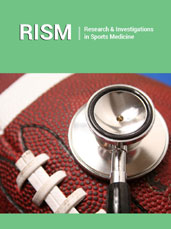
ISSN: 2577-1914 Volume11 Issue 3
Abstract
It has been well established that proper nutrition habits play a major role in improving athletic and sport performance. Recently, there has been a shift in popularized diets involving an increased emphasis on protein consumption. Earlier studies suggested that there were individual barriers to proper nutrition including a lack of information, lack of sources nutrition, lack of finances for securing nutrition, lack of time to prepare appropriate meals and distaste for the food and beverage options provided during team activities. This final barrier highlights the importance of taste for increasing consumption of protein supplementation products. Currently, there is a lack of research on the flavor appeal of protein supplementation products used by competitive athletes. Therefore, the purpose of this study was to describe the opinions of collegiate baseball players on a protein supplementation popsicle. A secondary purpose was to describe the effect of the examined product on gastrointestinal health. A total of 46 collegiate baseball players (age = 21 ± 2 years) from an NCAA Division II institution were enrolled in this study. Following weight training sessions, participants were provided with a whey protein popsicle (Whey Good ProteinTM, The Original Protein Shake on a StickTM, Whey Good, West Memphis, AR) to eat. Following consumption of a whey protein popsicle, participants were instructed to fill out an electronic survey that collected information on participant demographics, the participants impression of the protein popsicle and gastrointestinal symptoms following consuming the protein popsicle. 86.9% (N=38) of the participants answered “Like Extremely”, “Like”, or “Like Somewhat” when asked about their overall impressions of the protein popsicle. Out of the 46 participants, only two reported a mild increase in bloating following consumption of the protein popsicle. No participants reported moderate to severe gastrointestinal symptoms after consuming the protein popsicle. This study demonstrated that the tested whey protein popsicle was well received by the tested group of collegiate baseball players. Future research should study the impact of whey protein popsicles muscle performance during exercise and recovery during and after exercise. In the interim, clinicians should seek out protein supplementation options that encourage regular protein intake by their patients.
Introduction
It has been well established that proper nutrition habits play a major role in improving athletic and sport performance [1,2]. Factors that impact this optimal nutrition habits include total caloric intake, nutrient timing and periodization, macro- and micronutrient intake [3]. Recently, there has been a shift in popularized diets involving an increased emphasis on protein consumption [4]. Amongst nutrition and dietetic experts, fat and carbohydrate intake have often been considered the cause of obesity and cardiovascular diseases [4]. As such, increased protein intake is becoming an increasingly popular method of improving diet and increasing athletic and sport performance [4]. As the popularity of protein intake has increased, the number of protein supplement companies has also increased [5]. This has led to an increased number of protein supplementation products on the open market [5].
In the athletic population, protein and amino acid supplements are marketed for competitively and recreationally active individuals as means of muscle hypertrophy and performance enhancement [6]. Indeed, protein is an essential nutrient throughout the life cycle. Protein is a critical component to normal growth during infancy, muscular and skeletal metabolism, development and maintenance of the nervous system and sustenance of muscle mass and physical performance [6]. For most individuals, the average American diet provides enough protein to meet daily needs for maintaining healthy bodily functions [7]. Due to additional strain being put on the processes responsible for protein synthesis, energy production, immune function and gastrointestinal health, competitive athletes may experience an increased need for protein intake [6].
Protein requirements increase when athletes increase the intensity and duration of athletic performance [8]. This places increased demand for protein before and after physical activity for athletes [8]. In part due to its fast digestion and absorption, whey protein has become a popular source of protein supplementation among competitive athletes [9]. While not all athletes consume whey protein, it has become increasingly common for physical active individuals to consume protein supplements in addition to other protein-rich foods [10]. It is preferrable for this protein supplementation to be derived from whole foods integrated into an individual’s diet [6]. However, there are various obstacles that may make this dietary practice impractical for some individuals [6].
Previous research has sought to understand the barriers to proper protein intake, as well as other dietary insufficiencies. Earlier studies suggested that there were individual barriers to proper nutrition including a lack of information, lack of sources nutrition, lack of finances for securing nutrition, lack of time to prepare appropriate meals and distaste for the food and beverage options provided during team activities [11,12]. This final barrier highlights the importance of taste for increasing consumption of protein supplementation products. Currently, there is a lack of research on the flavor appeal of protein supplementation products used by competitive athletes. Therefore, the purpose of this study was to describe the opinions of collegiate baseball players on a protein supplementation popsicle. A secondary purpose was to describe the effect of the examined product on gastrointestinal health.
Methods
Participants
Participants were recruited for this study via announcements during team meetings. A total of 46 collegiate baseball players (age = 21 ± 2 years) from an NCAA Division II institution were enrolled in this study. All participants were informed of the study’s purpose and informed consent was obtained per institutional review board standards.
Intervention
Following weight training sessions, participants were provided with a whey protein popsicle (Whey Good ProteinTM, The Original Protein Shake on a StickTM, Whey Good, West Memphis, AR) to eat. Participants were instructed to consume the protein popsicle immediately following their workout and not make any additional changes to their dietary habits. Nutrition facts about the popsicle tested are included in Table 1.
Table 1:Nutrition facts about whey protein popsicle..
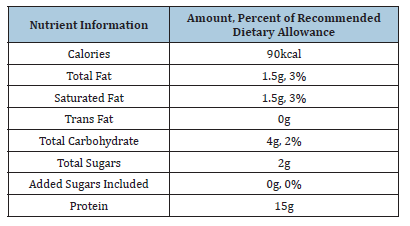
Data collection
Following consumption of a whey protein popsicle, participants were instructed to fill out an electronic survey. The survey included one multiple choice question obtaining informed consent, three fill in the blank and two multiple choice questions intended to gather demographic information. Following the demographic section, subjects were asked one multiple choice question on the flavor of protein popsicle they consumed, one multiple choice question on if they had tried the flavor before, five multiple choice questions on their impressions of the beverage answered on a six point Likert scale ranging from “Dislike Extremely” to “Like Extremely”, one fill in the blank question on what they liked best about the popsicle, one fill in the blank question on what they felt could have made the popsicle better and one multiple choice question on their preference of the protein popsicle over other protein supplement options answered on a six point Likert scale ranging from “Strongly Disagree” to “Strongly Agree”. The final section asked participants to report any gastrointestinal symptoms they experienced after drinking the beverage using seven multiple choice questions.
Statistical analysis
Relevant data from the electronic survey was transferred to, and analyzed using, a commercially available statistics software package (SPSS Version 28, IBM, Armonk, NY). A total of 46 collegiate baseball players participated in the study. Data assessed included, impressions of the protein popsicle, preference of the protein popsicle compared to other protein supplement options and impact of the protein popsicle on gastrointestinal symptoms. Frequencies, means and standard deviations were calculated where appropriate.
Result
Impressions of protein popsicle
All subjects were tested using the chocolate flavor of the protein popsicle. Impressions of the protein popsicle are detailed in Table 2. Overall impressions are further detailed in Figure 1.
Table 2:Impressions of whey protein popsicle.
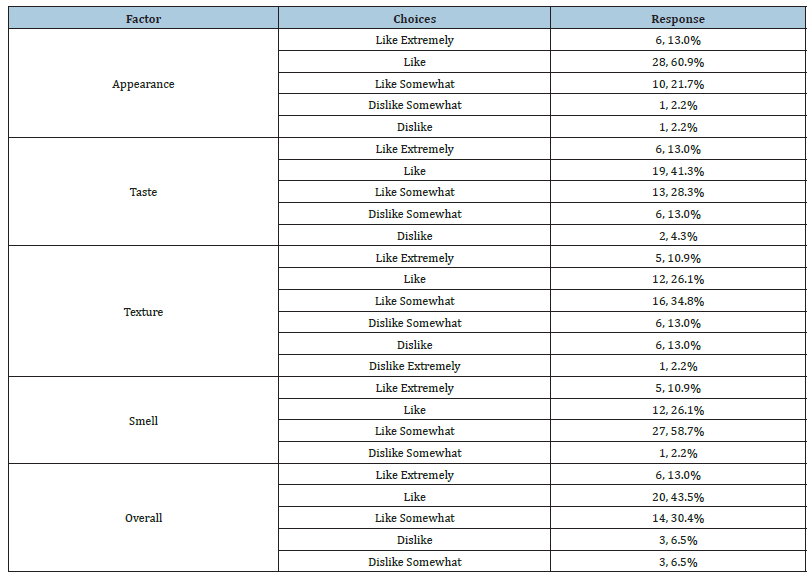
Figure 1:Overall impressions of whey protein popsicle.
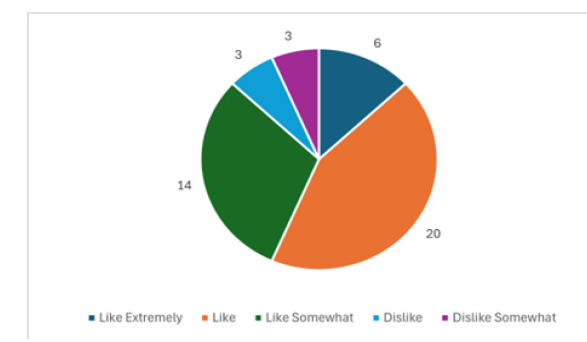
Preferences of whey protein popsicle of other protein supplement options
The majority of participants stated on some level that they would prefer to supplement their protein intake using the tested whey protein popsicle compared to other protein supplement options. Responses to these questions are detailed in Table 3. These findings are further detailed in Figure 2.
Table 3:Preferences of tested whey protein popsicle compared to other options.

Figure 2:Preferences of tested whey protein popsicle compared to other options.
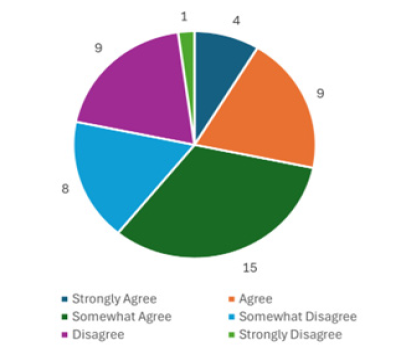
Gastrointestinal tolerability
Out of the 46 participants, only five reported a mild increase in gastrointestinal symptoms. After consuming the protein popsicle, two participants reported mild bloating. Overall, this represented a 4.0% rate of mild gastrointestinal symptoms following consumption of the protein popsicle. No participants reported moderate to severe gastrointestinal symptoms after consuming the protein popsicle.
Discussion
The purpose of this study was to describe the opinions of collegiate baseball players related to a whey protein popsicle. A secondary purpose of this study was to describe the effect of the examined whey protein popsicle on gastrointestinal health. Overall, the participants in this study had a favorable opinion of the whey protein popsicle that was tested. Furthermore, the majority of participants expressed that they would prefer to supplement the protein intake with the test whey protein popsicle compared to other protein supplementation options.
As previously mentioned, a protein supplement with an unappealing flavor profile can be a barrier to appropriate protein supplementation behaviors [11,12]. This places an emphasis on being able to provide physically active individuals with protein supplementation options that they enjoy consuming. Based on these results, the collegiate baseball players involved in this study enjoyed the taste, smell, appearance and texture of the tested whey protein popsicle. This would suggest that the tested whey protein popsicle would aid in encouraging protein supplementation among individuals participating in competitive athletics.
A possible limitation of this study was the relatively small sample size. Given that this study was conducted a single institution, there were difficulties with recruiting a larger number of participants. Compared to other studies on nutrition in physically active individuals, the sample size for this study was similar [13- 15]. Future studies should examine a larger sample from multiple institutions to allow for more generalizable conclusions.
Conclusion
To the authors’ knowledge, this is the first peer reviewed study describing the impressions of individuals participating in collegiate athletics regarding a whey protein popsicle. This study demonstrated that the tested whey protein popsicle was well received by the tested group of collegiate baseball players. Sports medicine clinicians attempting to improve the protein supplementation habits of their patients should consider using a similar product. Future research should study the impact of whey protein popsicles muscle performance during exercise and recovery during and after exercise. In the interim, clinicians should seek out protein supplementation options that encourage regular protein intake by their patients.
References
- Beck KL, von Hurst PR, O’Brien WJ, Badenhorst CE (2021) Micronutrients and athletic performance: A review. Food and Chemical Toxicology 158: 112618.
- Stellingwerff T, Mortan JP, Burke LM (2019) A framework of periodized nutrition for athletics. Int J Sport Nutr Exerc Metabol 29(2): 141-151.
- Benardot D (2020) Advanced sports nutrition. (3rd edn), Human Kinetiks, Champaign, IL, USA.
- Passariello CL, Marchionni S, Carcuro M, Casali G, Pasqua AD, et al. (2020) The Mediterranean athlete’s nutrition: Are protein supplements necessary. Nutrients 12(12): 3681.
- Malaguti H, Hrelia S, Lorenzini A, Biagi P (2007) A critical evaluation of high protein-low carbohydrate diets. Agro Food Ind Hi-Tech 18(5): VII-VIII.
- Karlund A, Gomez-Gallego C, Turpeinen AM, Palo-Oja OM, El-Nezami H, et al. (2019) Protein supplements and their relation with nutrition, microbiota consumption and health: Is more protein always better for sportspeople? Nutrients 11(4): 829.
- Ranganathan J, Vennard D, Waite R, Dumas P, Lipinski B, et al. (2016) Shifting diets for a sustainable food future. World Resources Institute, Washington, DC, USA.
- Clark A, Mach N (2016) Exercise-induced stress behavior, gut-microbiota-brain axis and diet: A systematic review for athletes. J Int Soc Sports Nutr 13: 43.
- Clarke SF, Murpy EF, O’Sullivan, Lucey AJ, Humphreys M, et al. (2014) Exercise and associated dietary extremes impact on gut microbial diversity. Gut 63(12): 1913-1920.
- Bianca A, Mammina C, Paoli A, Bellafiore M, Battaglia G, et al. (2011) Protein supplementation in strength and condition adepts: Knowledge, dietary behavior and practice in Palermo, Italy. J Int Soc Sports Nutr 8(1): 25.
- River-Brown AM, Quinones-Gonzalez JR, Pagan-Lasalle P (2018) Fluid intake pattern, dehydration and performance in young athletes during a triathlon in tropical climate. Medicine and Science in Sports & Exercise 50(5S): 342.
- Goulet ED (2012) Dehydration and endurance performance in competitive athletes. Nutrition Reviews 70(S2): S132-S136.
- Martinez-Aranda LM, Sanz-Matesanz M, Orozco-Duran G, Gonzalez-Fernandez FT, Rodriguez-Garcia L, et al. (2023) Effects of different rapid weight loss strategies and percentages on performance-related parameters in combat sports: An updated systematic review. International Journal of Environmental Research and Public Health 20(6): 5158.
- Patel AV, Mihalik JP, Notebaert AJ, Guskiewicz KM, Prentice WE (2007) Neuropsychological performance, postural stability, and symptoms after dehydration. Journal of Athletic Training 42(1): 66-75.
- Kobayashi K, Yasuda N (2022) Effectiveness of hydration education to improve hydration status during summer seasons in adolescent female indoor-sport athletes. Journal of Science and Medicine in Sport 25(S2): S8.
© 2025 SA Cage. This is an open access article distributed under the terms of the Creative Commons Attribution License , which permits unrestricted use, distribution, and build upon your work non-commercially.
 a Creative Commons Attribution 4.0 International License. Based on a work at www.crimsonpublishers.com.
Best viewed in
a Creative Commons Attribution 4.0 International License. Based on a work at www.crimsonpublishers.com.
Best viewed in 







.jpg)






























 Editorial Board Registrations
Editorial Board Registrations Submit your Article
Submit your Article Refer a Friend
Refer a Friend Advertise With Us
Advertise With Us
.jpg)






.jpg)














.bmp)
.jpg)
.png)
.jpg)










.jpg)






.png)

.png)



.png)






